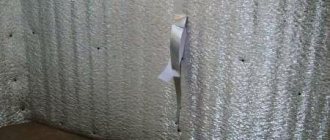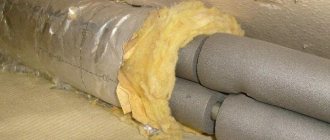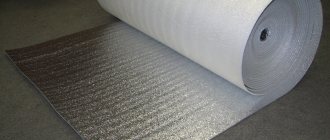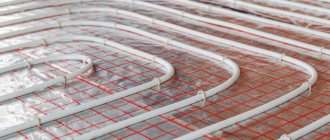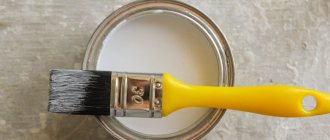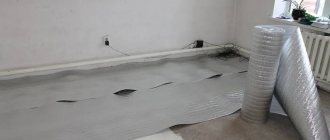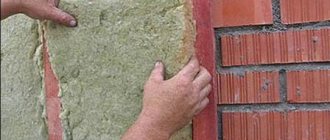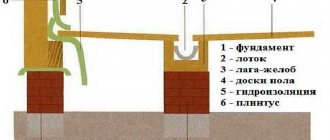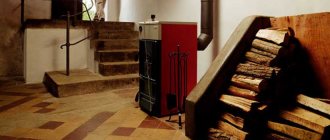Repair and decoration
04/21/2018 Anastasia Prozheva
There are many different insulation materials. Foil insulating material reflects up to 97% of infrared radiation in the direction of its arrival.
It is made on the basis of expanded polystyrene, foamed polyethylene, mineral and basalt wool. Its effectiveness will depend on proper installation.
In this article, we will look at which side to lay insulation with foil on the floor, the types and characteristics of materials, and the rules for their installation.
What is foil insulation?
The reflective layer can be found on one or both sides
This is a combined material that consists of a layer of aluminum foil or metallized film connected to a thermal insulation material. The reflective layer can be one-sided or two-sided. It is easy and quick to install due to its elasticity. Thinner than other thermal insulation materials.
Aluminum coating has maximum heat reflection properties, but is destroyed by alkalis in concrete. The metallized coating is resistant to alkaline influences. Spraying practically does not perform its function.
In addition to preserving heat, it can be used as waterproofing, as it does not allow moisture to pass through. The thinner the foil layer, the better it transmits heat through itself.
Types of insulation
There is a wide variety of foil insulation.
They differ in the materials used in manufacturing.
The characteristics of insulation with a layer of foil are described in the table:
| № | Foil material | Characteristic |
| 1 | Expanded polystyrene | Durable, reliable insulating material, produced in the form of rigid boards. It is used for thermal insulation of water and electric heated floors. Operation in the temperature range from -180 to +180 degrees |
| 2 | Mineral wool | Environmentally friendly, fireproof material, 50-100 mm thick. Manufactured in slabs, rolls and cylinders. It is used in all areas of insulation work. |
| 3 | Foamed polyethylene | Available in rolls, covered with aluminum foil. The material has a small thickness from 2 to 10 mm. The bottom layer can be self-adhesive. |
| 4 | Foamed polyethylene | Available in rolls, covered with aluminum foil. The material has a small thickness from 2 to 10 mm. The bottom layer can be self-adhesive. |
When choosing, you need to take into account the requirements for the room and its functional purpose. The top layer should be covered with aluminum foil and not sprayed.
Area of use of penofol and characteristic features of the material
Penofol is foamed polyethylene applied to a special foil base. The result is original and modern material. Its effectiveness is due to the combination of the insulating properties of polyethylene foam and the reflective properties of the foil coating. When deciding to insulate the floor in a wooden house with penofol, the owner is guided by the following obvious advantages of the material:
- Versatility. Penofol is equally successfully used in various building structures, not only as insulation, but also as a hydro- or vapor barrier material;
- Low thermal conductivity. In combination with the reflective effect, it allows the use of a thin layer;
- Compatibility with other insulation materials. Most often, penofol is used together with mineral wool, since the materials complement each other’s properties;
- Reasonable cost. The type of insulation under consideration, despite its high efficiency, belongs to budget thermal insulation materials;
- Ease of use. In most cases, the work is carried out by the owner of the wooden house himself;
- Harmlessness and environmental safety. During operation, no harmful substances are released;
- Durability and resistance to various negative influences, including biological ones. Penofol does not absorb moisture, and therefore does not rot, mold or mildew does not appear on it;
- Application in a wide temperature range - from minus 55 to plus 110 degrees.
An additional very significant advantage is the ability to insulate the floor in a wooden house with penofol from below or from above. The choice of option is presented to the work contractor. In addition, the material is actively used for insulating other structures and elements of buildings, for example, ceilings, ceilings, walls, air ducts, etc.
Properties
The materials used in production are most often environmentally friendly, safe for health and the environment.
Related article: Rubber tile laying technology
Advantages:
- light weight;
- durability;
- resistance to loads;
- protection against moisture penetration;
- high rates of heat saving and sound insulation;
- resistance to temperature changes;
- ease of installation;
- high reflective properties.
Such insulation can be used in any premises. In addition to the described qualities, it is capable of reflecting radiation.
Laying methods
Let's consider which side is the correct way to lay the insulation with foil on the floor.
Heat-saving properties depend on how correctly the insulation is installed.
Foil reflects infrared radiation, therefore, the metallized layer must be laid so that it faces the inside of the room.
Insulation of concrete floor
Place the casing with the foil side down
Most often, the rolled material is fixed to the concrete base using a special glue made on the basis of rubber.
Installation sequence:
- We prepare the surface. We level the slab so that there is no large difference in height. We seal all cracks and cracks with cement mortar.
- We spread the material on the floor with the foil layer facing up and cut it to the required length. We move the strip aside and apply glue to the place where it is laid. Let it sit for a few minutes according to the instructions for the glue. We lay and press the material well. We place the strips close to each other.
- We secure the joints with foil tape, which is sold in hardware stores.
For additional insulation of cold floors, wooden logs can be laid on top, the space between which is filled with slab insulation. Floorboards or sheet material (OSB, fiberboard, chipboard) are placed on top of it. For an interesting comparison of foil materials, watch this video:
You can secure the material with double-sided tape glued around the perimeter or dowels.
Wood floor insulation
It is most convenient to lay the material on an adhesive layer
It is most convenient to lay foil insulation on a wooden floor, which has a bottom self-adhesive layer.
If you bought material without an adhesive base, then you need to fix it with staples using a construction stapler or with double-sided tape.
Related article: Decorating a balcony with your own hands: step-by-step instructions (photos and videos)
Laying sequence:
- We remove the baseboards, remove debris and dust using a vacuum cleaner.
- If the boards have uneven surfaces, we sand them with a special machine and, if necessary, sand them (remove the top layer of the board).
- We seal all existing cracks with wood putty.
- We prime with an antiseptic composition.
- We measure the room, cut the roll, and lay it up with foil. It can be easily cut to size using sharp sewing scissors.
- Lay out the strips end to end. We wait a day for the material to settle and straighten out. If the heat insulator has a self-adhesive base, gradually remove the protective film and press it tightly to the surface. We lay the next strip end-to-end.
- We fix the joints of the strips with foil tape.
Once the material has been laid, the selected flooring can be installed.
Foil insulation for heated floors
When laying insulation under heated floors, lay the material with the foil facing up so that it reflects heat into the room
The base for heated floors must be flat without differences in height or defects. All errors must be eliminated.
Stages of laying thermal insulation with a layer of foil:
- We lay out the foil material in strips end to end, and glue the joints with special tape.
- We install a system of electric or water heated floors on top.
- We lay hydro- and vapor barrier material. It will prevent concrete from leaking onto the floor heating elements.
- We fill the screed with a thickness of 30-50 mm, depending on the type of heating elements and the functional purpose of the room.
Warm floors can only be turned on after the screed has completely dried. This will take about a month.
Insulation under floating screed
Having bought a two-layer material, you don’t have to bother with the question of which side to lay the insulation on
It is characterized by the fact that the slab is not rigidly fastened to the concrete screed; thermal insulation is laid between them.
Installation sequence:
- We prepare the base and eliminate all defects.
- We plaster the lower part of the walls.
- We stick damper tape around the perimeter of the walls; its height should be equal to the thickness of the floor: from the slab to the floor covering.
- We prime the base in two layers. Apply the next layer after the previous one has dried.
- We lay thermal insulating foil boards with the foil facing up. We use a metallized coating that is resistant to cement mortar. We lay the slabs strictly in a horizontal plane, close to each other. Uneven laying of insulation boards contributes to the formation of cracks in the concrete solution.
- We glue the joints of the plates with tape.
- We pour the concrete screed.
Related article: How to choose a modern slide for the living room (hall)
Lightweight and durable insulation with a layer of foil is becoming increasingly popular among consumers and professional builders due to its high heat retention and ease of installation. For more information about isolation, watch this video:
We looked at how to properly lay foil material for high-quality floor insulation. Thermal insulating material is always laid with foil on the outside; if you lay it the other way around, it will not retain heat fully.
The best posts
- Choosing paint for printing on fabric
- Connecting a washing machine yourself
- Laminate or PVC tiles: what to choose?
- Orange tree made of beads: do-it-yourself weaving pattern with photo
- Decorating a hallway in Provence style: photos of interiors and general tips
- Review of the house of Michael Douglas and Catherine Zeta-Jones [$11 million]: interior and exterior
- How to choose the perfect photo rollers for different rooms
- How to create a successful design for a bathroom combined with a toilet (+50 photos)
Penofol floor insulation technology
Usually wooden floors , and installing insulation on the floor will not be difficult.
The installation technology has 2 options for carrying out the work.
1 option for insulating a wooden floor with penofol with joists:
- After opening the floor and removing old boards, the logs are impregnated with an antiseptic or drying oil to prevent rotting.
- If the floor of a house under construction is being insulated, the width between the joists should be 35-40 cm.
- Between the lags, several layers of penofol are laid with a foil layer inside the room.
- Old or new boards are attached back, or you can use 12 mm thick plywood sheets. When using plywood with a thickness of 6-8 mm, it is necessary to lay it in 2 layers.
- The finishing can be linoleum or laminate.
Option 2 for floor insulation with penofol in a wooden house:
- The insulation is laid directly on the wooden covering. Penofol is placed in 1 layer end-to-end.
- The seams between the sheets are taped with metallized tape.
- Plywood sheets are placed on the insulation layer and screwed with self-tapping screws.
- The flooring of your choice is laid on the plywood.
